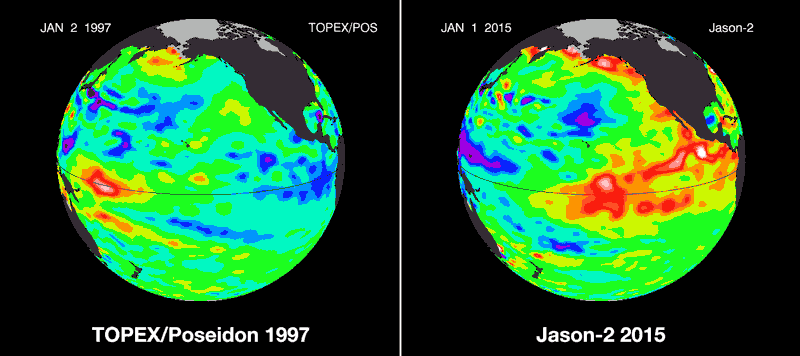Forecasters are increasingly, cautiously optimistic about relief coming to ease California’s drought, thanks to the strengthening of the El Niño weather pattern.
There’s an 85 percent chance of a strong El Niño sticking around through next spring, according to forecasters at the National Oceanic and Atmospheric Administration. Its strength should peak in the late fall and early winter, just the right time to deliver soaking storms.
But California officials pushed back on Thursday, warning that the strong forecast won’t guarantee the rainfall the state desperately needs.
“California cannot count on potential El Niño conditions to halt or reverse drought conditions,” said state climatologist Michael Anderson in a statement. “Historical weather data shows us that at best, there is a 50/50 chance of having a wetter winter. Unfortunately, due to shifting climate patterns, we cannot even be that sure.”
California saw extreme rainfall and flooding when conditions were similar in winter 1997-8. But look back to the previous seven strong El Niño events since 1950 and three actually produced dry years.

